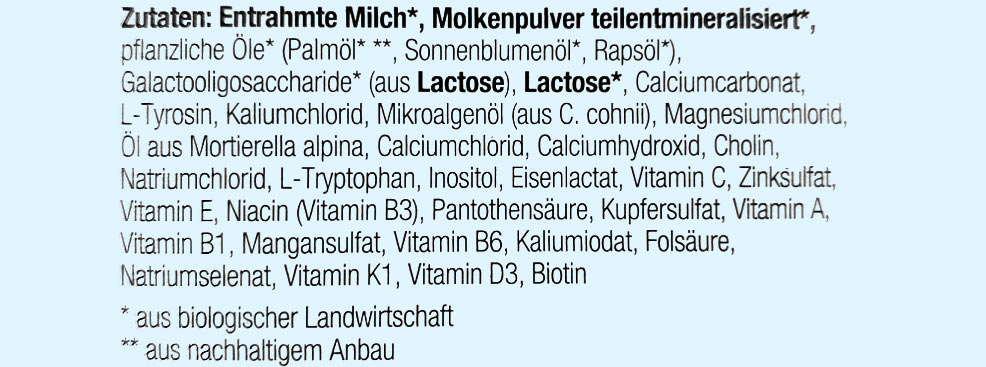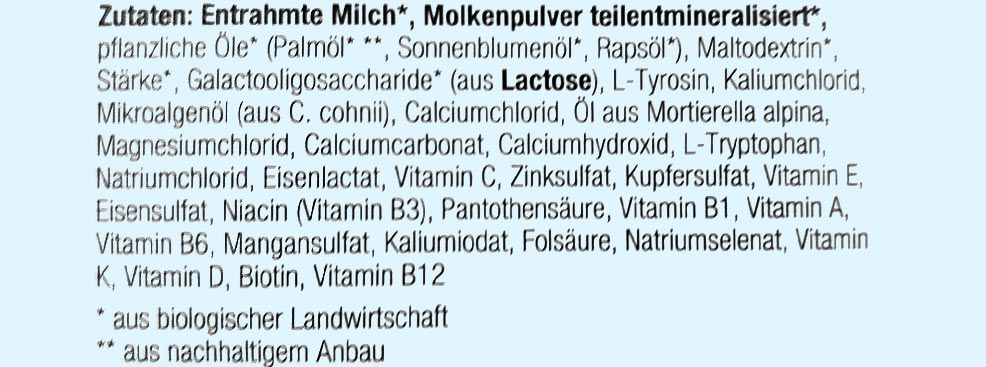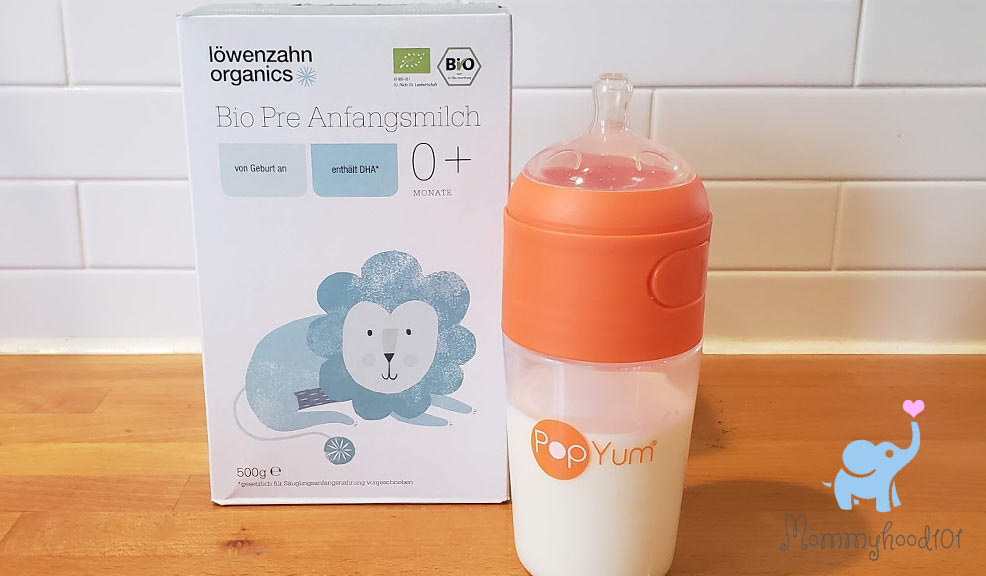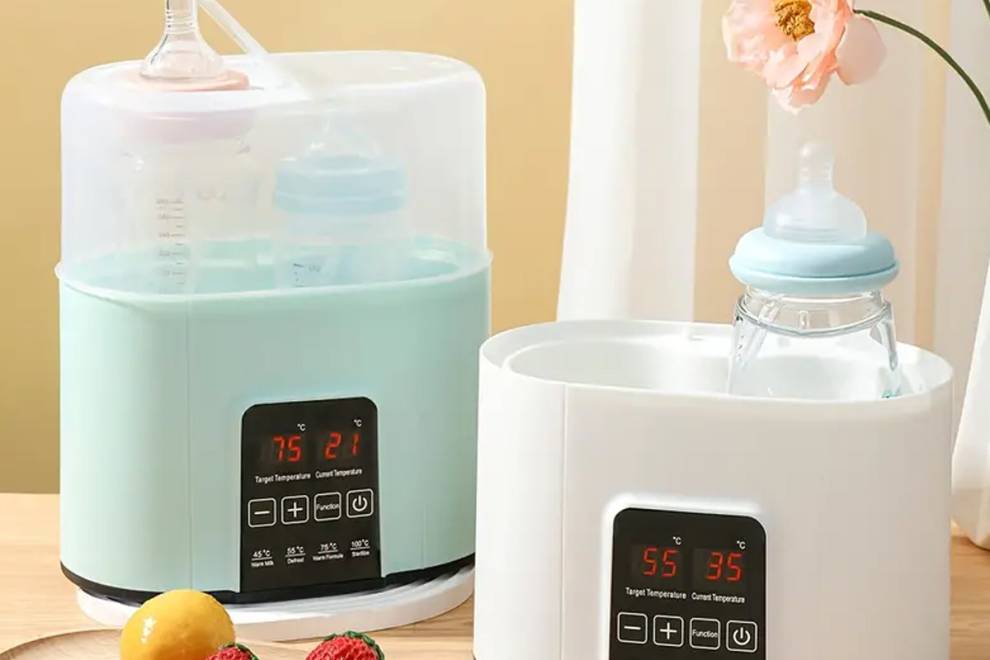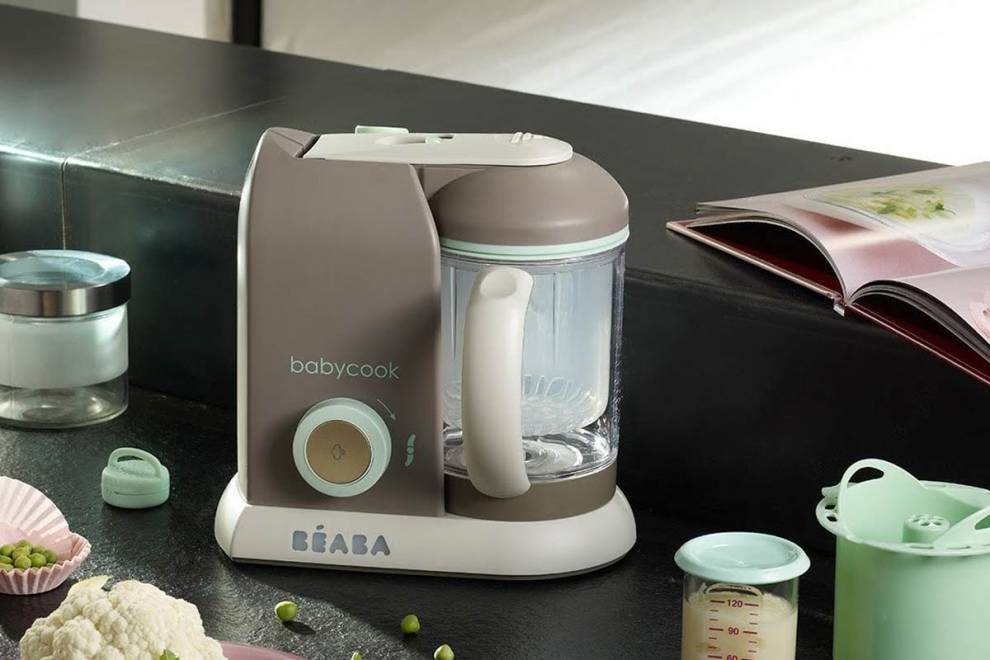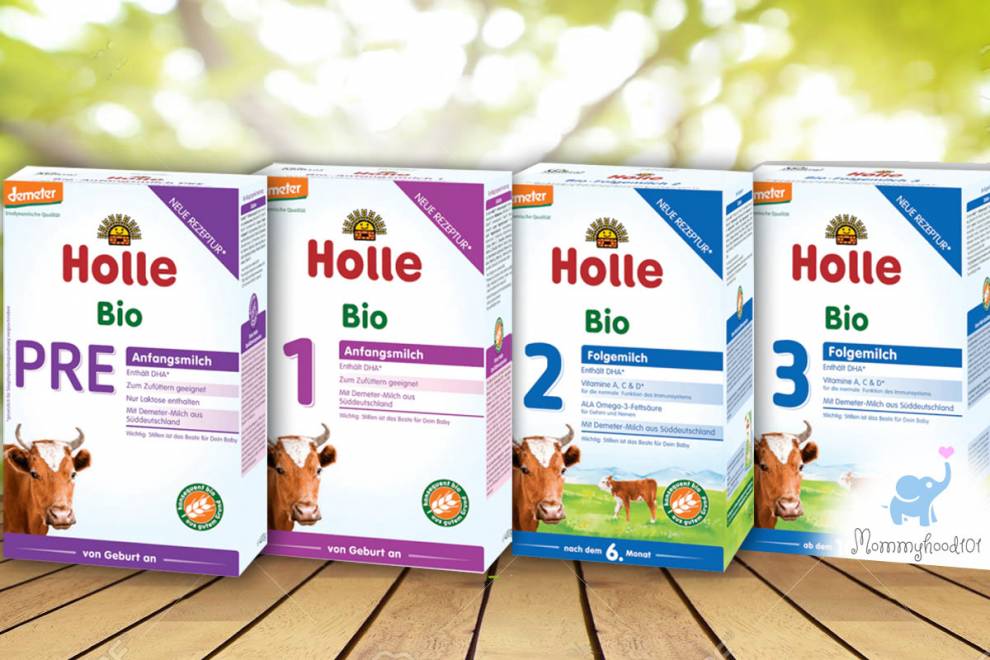Is the grass greener on the Lowenzahn side? We put it to the test and found out.
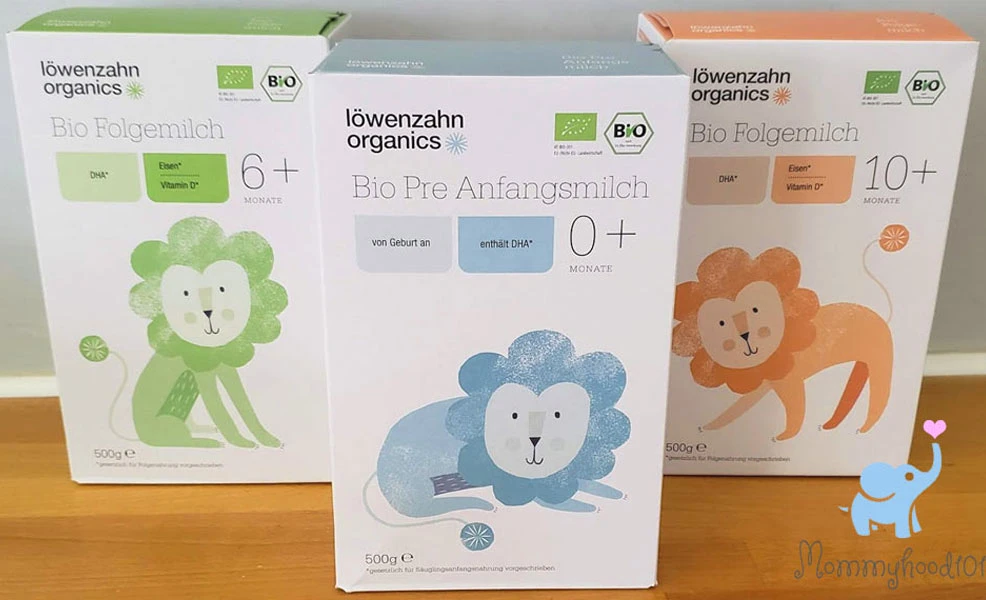
Mommyhood101 independently tests and curates baby gear to help you make informed decisions. If you buy products through links on our site, we may earn a commission.
Löwenzahn Organics was founded in 2016 by two German mothers with a desire to produce healthy, sustainable, and traceable organic products for infants and toddlers.
As of this year, Löwenzahn sells three organic baby formulas with milk sourced only from organic (and of course non-GMO) European farms. The founders Liz and Carmen pride themselves on using only high quality organic materials, achieving EU organic certification and conducting independent laboratory tests, and showing consistently high traceability of their ingredients.
But is it worthy of inclusion on our list of the best organic baby formulas? Let's find out!
We are always a bit skeptical about newcomers to the organic infant and toddler formula market, and Löwenzahn Organics is no exception!
-
- Lowenzahn Comparison Table
- Take-Home Message
- Some Translations to Know
- Lowenzahn Farming Practices
- EU Organic Farming
- Lowenzahn Ingredients
- Lowenzahn Stage 1 Ingredients
- Lowenzahn Stage 2 Ingredients
- Lowenzahn Stage 3 Ingredients
- Lowenzahn Stages: Ingredient Differences
- Lowenzahn Nutritional Analysis
- USDA Formula Recommendations
- Lowenzahn Stage 1 Nutrition
- Lowenzahn Stage 2 Nutrition
- Lowenzahn Stage 3 Nutrition
- Lowenzahn Testing in Infants
- Conclusions
- Where to Buy Lowenzahn
- References Cited
Full disclosure, Löwenzahn reached out to us to offer free samples for testing. The samples are pictured above, provided in infant (0+ months) and two follow-on varieties (6+ months and 10+ months).
To review the Löwenzahn Organics formulas, we tested them ourselves with infants and a toddler, and consulted with a developmental nutritionist to assess ingredients and nutritional contents relative to USA guidelines.
Spoiler alert, we are impressed with this new addition to organic infant formulas, and think it holds a lot of potential. Löwenzahn has done a great job with their formula, and we find their products very high quality and well-accepted and tolerated by infants and toddlers. We appreciated the inclusion of omega-3 and omega-6 fatty acids (DHA, ARA) and prebiotics (galacto-oligosaccharides, GOS), and some parents will be happy about the exclusion of fish oil as a fatty acid source.
However, we do have some minor concerns about other ingredients, including the use of palm oil, C. cohnii, Mortierella alpina oil, and maltodextrine and starch (in the follow-on varieties).
As you know from our reviews of organic baby formulas, we are not highly concerned about any of those specific ingredients, but we know that some parents consider them a deal-breaker!
Lowenzahn Organics Formula Review
Most people don't want to read this entire article to see what we found. So here is the summary of what we loved, and what we didn't.
✔️ Quality organic formulation.
✔️ German organic milk.
✔️ Nutrition at FDA standards.
✔️ Nutrition at USDA standards.
✔️ First ingredient is skim milk.
✔️ Nothing artificial.
✔️ No Maltodextrin or starch (0+ mo).
✔️ No sucrose or corn syrups.
✔️ Gluten & soy free.
✔️ No fish oil.
✔️ Omega-3 via DHA, & ALA.
✔️ Omega-6 via LA.
✔️ Inositol & Choline (0+ mo).
✔️ Amino Acids.
✔️ High acceptance, good taste.
✔️ No gas or constipation.
✔️ Prebiotics via GOS.
❌ No probiotics.
❌ Palm oil in all stages.
❌ C. Cohnii and M. Alpina oils.
❌ Maltodextrin in stages 2 and 3.
❌ Starch in stages 2 and 3.
Lowenzahn Formulas: Some Translations
Because Löwenzahn products are made in Germany and labeled for sale in Germany, all of their labels are in German.
Here are some key terms from the packaging and their translations:
Bio Pre Anfangsmilch: Bio means organic, Pre indicates that it's an infant formulation, and Anfangsmilch means starting milk. So this roughly means Organic Infant Starting Milk.
Bio Folgemilch: Bio means organic, Folgemilch means follow-on milk. So this roughly means Organic Follow-on Milk.
Monate: This means months in German, so when it says "0+ monate" that means 0+ months.
For ingredients and nutrition fact translation, continue reading!
Lowenzahn Formulas: Best Practices?
Löwenzahn Organics formulas are made in Germany using organic ingredients sourced from throughout Europe and the EU.
Löwenzahn is certified organic (Bio) with the code DE-ÖKO-006, which indicates that the product was inspected and cerified by the ABCERT AG inspection body, located in Esslingen, Germany.
It is also certified organic by the EU with the code AT-BIO-301, which indicates that the product was inspected and certified by Austria Bio Garantie GmbH, located in Enzersfeld, Austria.
Relative to the USDA Organic certification process used in the USA (see the familiar logo on the right), the European Union (including Germany and Austria) has stricter organic regulations. Once you receive approvals through the extended certification process, you can display the below (center) star leaf icon on your products.
By comparison, Löwenzahn meets the 98% minimum organic content requirement of the EU requirement, which is a bit more stringent than the 95% minimum organic content requirement of the USDA's certification process.
What are the EU's organic regulations?
Because Löwenzahn Organics sells their baby formulas primarily to the German market, and Germany is part of the European Union, they must conform to EU organic requirements.
Fortunately for you, the EU has a very strict system of organic controls, including a rigorous annual inspection process to verify continuing conformance.
Here are the specific organic regulatory criteria for the EU certification process:
- No protecting plants by using synthetic chemicals such as herbicides or pesticides.
- No use of soluble mineral fertilizers.
- No application of chemical growth regulators.
- Feeding animals with farm-grown feed, not purchased feed, when possible.
- No use of antibiotics other than to treat infection.
Lowenzahn Formula Ingredients
Löwenzahn formulas are very unique in that each package contains a transparency code on the bottom.
Our transparency codes were L54045A0165 for 0+ months, L54245A0163 for 6+ months, and L54345A0290 for 10+ months. Feel free to look up those codes on the Löwenzahn tracking tool.
Across all three varieties, the skim milk was sourced from dairy farms in The Netherlands, Denmark, Sweden, France, Luxembourg, Belgium, Great Britain, and Germany.
The lactose was sourced from Germany, vitamins and minerals were sourced from Germany, Netherlands, and Poland, most vegetable oils were sourced from Austria, and the palm oil specifically was sourced from West Africa and South America.
We love to see this level of transparency!
In terms of ingredient composition, Löwenzahn Organics goes beyond EU, and US requirements to include Omega fatty acids, amino acids, inositol, choline, and prebiotics.
The use of ingredients sourced from organic farms in Europe provides some intangible benefits for the quality of their infant and toddler formulas.
While these benefits may not appear on an ingredients label, this usually means that there is a lower risk of the products containing all the nasty stuff you don't want to occur (even in trace amounts), like pesticides, herbicides, antibiotics, or heavy metals.
Here are the ingredients in each of the Löwenzahn baby formulas (as of mid-2020 manufacturing date):
Lowenzahn Stage 1 Ingredients (translated): skimmed milk*, partly demineralised whey powder*, oil mixture* (palm oil* **, sunflower oil*, rapeseed oil*), galacto-oligosaccharides* (from lactose), lactose*, calcium carbonate, L-tyrosine, potassium chloride, microalgae oil (from C. cohnii), magnesium chloride, oil from Mortierella alpina, calcium chloride, calcium hydroxide, choline, sodium chloride, L-tryptophan, inositol, iron lactate, vitamin C, zinc sulfate, vitamin E, niacin, pantothenic acid, copper sulfate, vitamin A, vitamin B1, manganese sulfate, vitamin B6, potassium iodate, folic acid, sodium selenate, vitamin K1, vitamin D3, biotin.
* from organic agriculture
** sustainably produced
† sunflower oil contains linoleic acid, rapeseed oil contains both linoleic and α-linolenic acid
Lowenzahn Stage 2 Ingredients (translated): skimmed milk*, partly demineralised whey powder*, oil mixture (palm oil* **, sunflower oil*, rapeseed oil*), galacto-oligosaccharides* (from lactose), maltodextrin*, starch*, lactose*, L-tyrosine, potassium chloride, microalgae oil (from C. cohnii), calcium chloride, magnesium chloride, oil from Mortierella alpina, calcium carbonate, calcium hydroxide, L-tryptophan, sodium chloride, iron lactate, vitamin C, zinc sulfate, copper sulfate, vitamin E, iron sulfate, niacin, pantothenic acid, vitamin B1, vitamin A, vitamin B6, manganese sulfate, potassium iodate, folic acid, sodium selenate, vitamin K, vitamin D, biotin, vitamin B12.
* from organic agriculture
** sustainably produced
† sunflower oil contains linoleic acid, rapeseed oil contains both linoleic and α-linolenic acid
Lowenzahn Stage 3 Ingredients (translated): skimmed milk*, partly demineralised whey powder*, oil mixture (palm oil* **, sunflower oil*, rapeseed oil*), maltodextrin*, starch*, galacto-oligosaccharides* (from lactose), L-tyrosine, potassium chloride, microalgae oil (from C. cohnii), calcium chloride, oil from Mortierella alpina, magnesium chloride, calcium carbonate, calcium hydroxide, L-tryptophan, sodium chloride, iron lactate, vitamin C, zinc sulfate, copper sulfate, vitamin E, iron sulfate, niacin, pantothenic acid, vitamin B1, vitamin A, vitamin B6, manganese sulfate, potassium iodate, folic acid, sodium selenate, vitamin K, vitamin D, biotin, vitamin B12.
* from organic agriculture
** sustainably produced
† sunflower oil contains linoleic acid, rapeseed oil contains both linoleic and α-linolenic acid
Here are some ingredients that we did not find in any stages of Löwenzahn: corn syrup or corn syrup solids, artificial colors, artificial flavors, preservatives, sucrose, soy, gluten, genetically modified organisms (GMOs), carrageenan, or high fructose corn syrup.
Some ingredients we didn't appreciate:
Palm Oil: Many baby formulas choose to use palm oil as a fat source due to its high levels of palmitic acid, one of the primary fatty acids found in breast milk. However, some parents get concerned that palm oil can reduce calcium and fat absorption and limit bone density, which may be especially important for premature babies (scientific reports are here and here). For this reason, many baby formulas are shifting away from palm oil entirely, as seen in our reviews of Loulouka formula and Kendamil formula. In Löwenzahn, palm oil is listed first among the three oils, which means it is the primary fat source.
Maltodextrin: This thickening carbohydrate is present in stages 2 (6+ months) and 3 (10+ months), similar to what we found in our Lebenswert formula review. Stage 2 uses maltodextrin as a supplement to lactose, whereas Stage 2 completely eliminates lactose. Maltodextrin is usually sourced from corn and is relatively easy to digest, but it also has a very high glycemic index (GI around 110) relative to lactose (GI around 70).
Starch: Like maltodextrin, starch has a high glycemic index (GI around 95) and is used to supplement lactose (Stage 2) and along with maltodextrine to completely replace lactose (Stage 3). It is appropriate to introduce additional carbohydrates into a diet as a child gets older, but it's also recognized as a relatively cheap filler without the nutritional value of lactose.
C. Cohnii Oil: Crypthecodinium cohnii is a species of algae that is contains omega-3 fatty acid DHA. It is a popular alternative to using fish oil in baby formulas, but has also been the subject of some controversy. Some of that controversy is warranted, particularly because C. Cohnii oil is not well regulated, though some baby formula manufacturers have found non-GMO and organic sources.
Other controversy comes from parents concerned about the use of hexane to extract this oil from algae; in reality, independent analyses show that no detectable levels of hexane exist in the oil when extraction is done properly.
The only other controversy is that C. Cohnii oil has been linked to diarrhea and other gastrointestinal issues; however, we were not able to find any scientific evidence for this relationship. In fact, we could only find evidence showing that DHA and ARA supplementation tends to reduce these issues.
M. Alpina Oil: Mortierella alpina is a species of fungus that contains omega-3 fatty acid ARA. Just like C. Cohnii oil, it is a popular alternative to using fish oil in baby formulas. For the same reasons we list for C. Cohnii oil, M. Alpina oil has also been the subject of controversy.
Personally, we prefer to use fish oil, though vegetarian or vegan parents might prefer the use of oils extracted from algae and fungus.
Some other ingredients worth mentioning:
Prebiotics via GOS: This is galactooligosaccharides, which are dietary prebiotics that help promote a healthy gut microbiome through benefits to intestinal microbiota and gut barrier function. Research shows that prebiotics in infant formula are beneficial for digestion and reducing the rates of gas and colic (and they are more effective than probiotics, see references).
Plant-based DHA Omega 3: Docosahexaenoic acid, or DHA, is commonly sourced from fish. While some parents don't mind this, some prefer a vegetarian option, and some with very sensitive noses don't appreciate smelling a hint of fish oil in their baby formula. Löwenzahn uses a plant-based DHA, sourced from algae (this is how fish get DHA into their bodies too, because algae is in their food chain).
Fluoride: Löwenzahn doesn't add fluoride to their formulas like some others (like we saw in our Kendamil formula review), though it is naturally present in small amounts.
Lowenzahn Stages: Ingredient Differences
1. Löwenzahn Stage 1 versus Stage 2: There are two main differences between Löwenzahn Stages 1 and 2. First, Stage 2 removes some lactose (about a 10% reduction) and adds in some maltodextrine and starch as a supplementary carbohydrates. Second, Stage 2 removes choline and inositol, and some of the minerals are provided in slightly different forms. Stage 1 is intended for birth to 6 months, and Stage 2 for 6+ months.
2. Löwenzahn Stage 2 versus Stage 3: There is one main differences between Löwenzahn Stages 2 and 3: Stage 3 removes lactose entirely and replaces it with two carbohydrates: maltodextrin and starch. Of course, the milk and whey powder still provide lactose so this only equates to about a 10% reduction in lactose content relative to Stage 2.
Lowenzahn Formula Nutritional Analysis
To examine whether Löwenzahn baby formulas come close to the stringent US nutritional recommendations put forth by the US Department of Agriculture (USDA, see references), Food and Drug Administration (FDA), and American Academy of Pediatrics (AAP), we consulted with a dietician nutritionist with expertise in infant feeding (Mr. John Anderson).
Note that the US FDA also publishes minimum infant formula nutritional requirements (see references), but all of the infant formulas we reviewed met these published standards, and they are only relevant for 0-6 months. Because the Löwenzahn formulas appear to meet the FDA minimum requirements (according to our review), we compared them to the more general USDA daily intake recommendations.
The USDA does not publish recommended daily allowances (RDAs) for infants between 0-6 months. Instead, they publish information about Adequate Intake (AI), which is used when there is not enough evidence to make a formal RDA. The AI is set at a level assumed to provide nutritional adequacy.
Here are the USDA's AIs (per day) for infants aged 0-6 months, and 6-12 months. Units are grams (g), milligrams (mg), micrograms (μg).
USDA Nutritional Recommendations:
| Carbohydrates | 0-6mo: 60g | 6-12mo: 95g |
| Proteins | 0-6mo: 9.1g | 6-12mo: 11g |
| Fats | 0-6mo: 31g | 6-12mo: 30g |
| Omega-3 | 0-6mo: 0.5g | 6-12mo: 0.5g |
| Omega-6 | 0-6mo: 4.4g | 6-12mo: 4.6g |
| Vitamin A | 0-6mo: 400μg | 6-12mo: 500μg |
| Vitamin B1 | 0-6mo: 0.2mg | 6-12mo: 0.3mg |
| Vitamin B2 | 0-6mo: 0.3mg | 6-12mo: 0.4mg |
| Vitamin B6 | 0-6mo: 0.1mg | 6-12mo: 0.3mg |
| Vitamin B12 | 0-6mo: 0.4μg | 6-12mo: 0.5μg |
| Vitamin C | 0-6mo: 40mg | 6-12mo: 50mg |
| Vitamin D | 0-6mo: 5μg | 6-12mo: 5μg |
| Vitamin E | 0-6mo: 4mg | 6-12mo: 5mg |
| Vitamin K | 0-6mo: 2μg | 6-12mo: 2.5μg |
| Folate | 0-6mo: 65μg | 6-12mo: 80μg |
| Niacin | 0-6mo: 2mg | 6-12mo: 4mg |
| Calcium | 0-6mo: 210mg | 6-12mo: 270mg |
| Iron | 0-6mo: 0.27mg | 6-12mo: 11mg |
Given that the Stage 1 Löwenzahn formula is intended for use from birth to 6 months, we evaluated its nutritional content against the USDA 0-6 month recommendations. For the Stage 2 and 3 versions, we evaluated against the USDA 6-12 month recommendations.
Because the USDA recommendations are for daily intake, we considered the daily intake recommended by Löwenzahn in their "Drinking quantity and dosage" guide. Stage 1 suggests an average of about 110 grams of formula per day for the first 6 months; of course, this is lower (about 80 grams) for the first month, then increases with age to over 120g/day.
To derive an estimate of how much nutritional content a baby would receive each day when using Löwenzahn organic Stage 1, we used the average recommended serving for the first 6 months (about 110 grams of formula per day). This will overestimate nutrients for early months, and underestimate for later months. As you will see from our analysis, this isn't cause for much concern.
Does Lowenzahn Stage 1 Meet USDA Nutritional Recommendations?
In general, yes, very similarly to US-made baby formulas. Here is a table comparing the USDA recommendation for 0-6 months to what the Löwenzahn Stage 1 provides (in about 110g of powdered formula):
| Carbohydrates | USDA: 60g | Stage 1: 58.3g |
| Proteins | USDA: 9.1g | Stage 1: 11.7g |
| Fats | USDA: 31g | Stage 1: 30g |
| Omega-3 | USDA: 0.5g | Stage 1: 0.4g |
| Omega-6 | USDA: 4.4g | Stage 1: 4.6g |
| Vitamin A | USDA: 400μg | Stage 1: 427μg |
| Vitamin B1 | USDA: 0.2mg | Stage 1: 0.69mg |
| Vitamin B2 | USDA: 0.3mg | Stage 1: 1.7mg |
| Vitamin B6 | USDA: 0.1mg | Stage 1: 0.49mg |
| Vitamin B12 | USDA: 0.4μg | Stage 1: 0.99μg |
| Vitamin C | USDA: 40mg | Stage 1: 99.9mg |
| Vitamin D | USDA: 5μg | Stage 1: 13.3μg |
| Vitamin E | USDA: 4mg | Stage 1: 13.3mg |
| Vitamin K | USDA: 2μg | Stage 1: 65.8μg |
| Folate | USDA: 65μg | Stage 1: 192μg |
| Niacin | USDA: 2mg | Stage 1: 3.7mg |
| Calcium | USDA: 210mg | Stage 1: 561mg |
| Iron | USDA: 0.27mg | Stage 1: 5.1mg |
Notice how close all of those numbers are to each other, with Löwenzahn showing a very similar nutritional profile to most other European baby formulas, prioritizing protein over fats and carbohydrates. Specifically, European formulas tend to have slightly higher protein and slightly lower fat than American baby formulas.
USDA guidance for fat is 31g per day, which precisely matches how much fat is in breastmilk (about 4.2g per 100mL, or 30.8g per 100g). Löwenzahn comes in at about 30g/day, which is similar to Kendamil but actually higher than most European baby formulas such as Loulouka, HiPP Combiotic, or Holle Stage 1.
We compared the Löwenzahn Stage 1 nutritional profile with the most popular Similac and Enfamil (American) formulas. Note that those are usually slightly low relative to those USDA recommendations (Similac and Enfamil are usually around 27g of fat per 100g of formula).
In other words, Löwenzahn Stage 1 provides an overall nutritional profile that is very similar to the major American baby formula brands.
Does Lowenzahn Stage 2 Meet USDA Nutritional Recommendations?
In looking at the USDA recommendations for infants 6-12 months of age, you realize that they recommend about 140-150g/day of formula. That equates to about 32 scoops (4.6g/scoop) per day, which is about 960mL per day of prepared Stage 2 formula. Clearly that's a ton of formula and unlikely to be the case with your 6-12 month old baby, since you'll likely be supplementing formula with at least some oatmeal and/or rice cereal.
Here is a table comparing the USDA recommendation for 6-12 months to what the Löwenzahn Stage 2 provides (in 150g of powdered formula):
| Carbohydrates | USDA: 95g | Stage 2: 83.2g |
| Proteins | USDA: 11g | Stage 2: 15.9g |
| Fats | USDA: 30g | Stage 2: 38.8g |
| Omega-3 | USDA: 0.5g | Stage 2: 0.54g |
| Omega-6 | USDA: 4.6g | Stage 2: 6.3g |
| Vitamin A | USDA: 500μg | Stage 2: 587μg |
| Vitamin B1 | USDA: 0.3mg | Stage 2: 1.1mg |
| Vitamin B2 | USDA: 0.4mg | Stage 2: 1.8mg |
| Vitamin B6 | USDA: 0.3mg | Stage 2: 0.8mg |
| Vitamin B12 | USDA: 0.5μg | Stage 2: 1.48μg |
| Vitamin C | USDA: 50mg | Stage 2 125.4mg |
| Vitamin D | USDA: 5μg | Stage 2: 20.5μg |
| Vitamin E | USDA: 5mg | Stage 2: 14.8mg |
| Vitamin K | USDA: 2.5μg | Stage 2: 69.5μg |
| Folate | USDA: 80μg | Stage 2: 253μg |
| Niacin | USDA: 4mg | Stage 2: 5.8mg |
| Calcium | USDA: 270mg | Stage 2: 619mg |
| Iron | USDA: 11mg | Stage 2: 12.5mg |
For Stage 2, the Löwenzahn comes in over the protein and fat recommendations of USDA, and slightly under the carbohydrate recommendation. In other words, the Stage 2 formula is shifting towards a higher protein and fat diet, with lower sugars; again, this is very common for European formula nutritional ratios.
From 0-6 months to 6-12 months, the USDA shifts the relative proportion of carbohydrates up, and proteins and fats down. This is a difference in European versus American feeding recommendations, with proportions shifting in opposite directions as babies move from Stage 1 to Stage 2.
Which is the right guideline to follow? Our opinion is that the EU standards are more in line with current research, whereas the USDA guidelines are relatively dated. But that's just an opinion, and research is constantly changing!
Does Lowenzahn Stage 3 Meet USDA Nutritional Recommendations?
As with Stage 2, we use the USDA 6-12 month recommendations. Stage 3 is always a difficult comparison to make, because your child will also be eating many first foods (oatmeal and rice cereals, purees) by the time they are 12+ months. Those solid foods will complement any feeding done with a Stage 3 formula, making any estimates of formula quantity to fulfill caloric needs of a 12+ month old baby a bit unreasonable.
For example, to get 145g/day of Stage 3 formula, that would take about 31 scoops of the product, and over 1000mL of prepared formula per day (about 5 servings). That's pretty excessive! More reasonably, your child will be consuming about 2-3 servings of Stage 3, along with a couple servings of cereals and purees.
In any event, here is what Löwenzahn Stage 3 provides, at a 150g/day serving:
| Carbohydrates | USDA: 95g | Stage 3: 85.5g |
| Proteins | USDA: 11g | Stage 3: 15.9g |
| Fats | USDA: 30g | Stage 3: 36.5g |
| Omega-3 | USDA: 0.5g | Stage 3: 0.54g |
| Omega-6 | USDA: 4.6g | Stage 3: 6.3g |
| Vitamin A | USDA: 500μg | Stage 3: 556μg |
| Vitamin B1 | USDA: 0.3mg | Stage 3: 1.07mg |
| Vitamin B2 | USDA: 0.4mg | Stage 3: 1.6mg |
| Vitamin B6 | USDA: 0.3mg | Stage 3: 0.81mg |
| Vitamin B12 | USDA: 0.5μg | Stage 3: 1.5μg |
| Vitamin C | USDA: 50mg | Stage 3: 114mg |
| Vitamin D | USDA: 5μg | Stage 3: 18.2μg |
| Vitamin E | USDA: 5mg | Stage 3: 14.8mg |
| Vitamin K | USDA: 2.5μg | Stage 3: 63μg |
| Folate | USDA: 80μg | Stage 3: 238μg |
| Niacin | USDA: 4mg | Stage 3: 5.6mg |
| Calcium | USDA: 270mg | Stage 3: 607mg |
| Iron | USDA: 11mg | Stage 3: 12.5mg |
In terms of macronutrients (proteins, fats, carbohydrates), you'll notice that Stage 3 is very similar to Stage 2 in its nutritional composition and proportions. In general, it meets USDA recommendations, but prioritizing proteins and fats rather than carbohydrates, which is the opposite of the American tendency to prioritize carbohydrates over proteins and fats.
In 2020, the EU passed (well, it was passed in 2016, but enforcement started February 2020) a requirement that baby formulas include Omega-3, and this is a new addition to most European formulas. This is why you see DHA and ALA appearing in new European formulas.
Most parents begin to introduce solid foods in addition to formula or breastfeeding. These usually first include rice and/or oatmeal cereals, and then progress to fruit and vegetable purees. These will complement the nutrition found solely in the formula, including additional iron and carbohydrates.
Some parents might be interested to learn that many European baby formulas contain trace levels of fluoride. This is not usually added by the manufacturer, but appears in trace amounts (e.g., <0.001mg per 100mL prepared formula) due to the water used during manufacturing. For Löwenzahn, this occur in all three stages.
The level of fluoride (0.006 mg in 13.2g of powder) in Löwenzahn is equivalent to about 0.68 mg of fluoride in a liter of prepared formula, which is similar to fluoride levels found in bottled water (about 0.4mg per liter), and way less than found in fluoridated tap water (about 5mg per liter).
Lowenzahn Testing in Infants
Löwenzahn was generous enought to donate Stage 1, Stage 2, and Stage 3 varieties of their organic formula for testing!
We tested the Stage 1 in a newborn (4 weeks) breastfed baby and a 3 month old formula-fed baby (he typically feeds with Loulouka).
We tested the Stage 2 in a 10 month old formula-fed baby (HiPP). We have not yet tested the Stage 3.
Mixing and Taste-Testing
Löwenzahn mixes very easily with warm water, and we found that it didn't leave any film, residue, or clumps on the inside of the bottle. Not only that, but we didn't experience any bubbling or foaming after a vigorous shaking. That's very rare, and we love to see a formula powder mix so easily with water!
One of the things we really liked about Löwenzahn Organics is that they included convenient feeding guides in English, as pictured below.
To prepare the formula, we followed the instructions: boil water and leave it to cool for about 10 minutes (corresponding to about 104-122 degrees F), pour half of the required amount of water into the bottle, then add the correct number of leveled scoops of formula (using the provided scoop). Close the bottle and shake it vigorously, then open it up and add the remaining amount of water and shake it again. Put a nipple on the bottle, verify it is cooled to about 99 degrees F (37 deg C), and feed.
In terms of texture and taste, we found it to to be surprisingly rich given that it's a skim milk formula. When we tried it ourselves, it tasted very sweet likely due to the high lactose content.
It has very good flow through slow-flow or medium-flow nipples.
Notice how the bubbles and foam settled very nicely after mixing and sitting for about 10 minutes to cool to around 99deg F. Want to learn more about that PopYum bottle? Check out our list of the Best Baby Bottles of the year!
By the way, the classic cardboard box and foil bag isn't anywhere near as nice as some of the newer flip-top tins. But it is definitely easier to recycle!
Safety First: Never prepare powdered formula with anything but water. If you're interested in fortifying your breast milk with formula you must ask your doctor for guidance first, as this can be very dangerous for your baby.
Feeding with Lowenzahn
The two infants both seemed to take to Löwenzahn very quickly and without any hesitation. Neither of them rejected it or seemed displeased, which is a great sign.
Each of the infants tried the 0+ version, each for two feedings. They didn't seem to develop any gas or other gastrointestinal distress, or at least no more so than usual.
The older baby, at 10 months, tested the Stage 2 (6+ months) version. He didn't seem to like the taste and refused to drink it. Mom says that isn't especially surprising for him as he's very attached to his HiPP Combiotic formula, and this is how he's acted in the past when she tried to switch to a less expensive brand (Baby's Only).
We have not tested the Stage 3 with a toddler yet, but will update this article once we do.
Conclusions
This was our first time trying out the new Löwenzahn Organics baby formulas, and we were really excited to give them a shot!
As you probably realize, the organic baby formula market is expanding rapidly, especially in the European market. It is very challenging for smaller companies like Löwenzahn to compete with the marketing and development budgets of companies like HiPP and Holle that have been around for many decades and dominate the market.
European baby formulas are becoming increasingly common in the US, as parents look to the EU to find high quality, organic baby formulas that they can trust (and afford!). So we're always excited to try a new option that is available on the US market (this one can be found at Formuland).
Overall, we are happy to report that we appreciated several aspects of the Löwenzahn formulas!
These included the traceability of ingredients, the organic ingredient sourcing, and the highly responsive and engaged team at Löwenzahn. The addition of Omega-3 and Omega-6, choline, inositol, and prebiotics are excellent, and we love to see those in a new formula. Note that Omega-3 in DHA form is required in the EU, but Omega-6 is not (yet).
The other thing we really loved about Löwenzahn was how easy the formula was to mix with water, how it didn't show any foaming or bubbles, and how great it tasted (even to us!). Our test babies did very well with the Stage 1, and they showed no unusual signs of GI distress.
The only things we thought could be improved upon were the use of maltodextrin and starch in Stages 2 and 3, and the use of palm oil. We're less concerned about the use of algae and fungal oils, though those are preferred over fish oil by some parents.
Overall, the nutritional profile of Löwenzahn was excellent, coming in near or above FDA and USDA guidelines, which was nice to see and made us feel comfortable using this to not only supplement but also possibly replace breast milk entirely (talk to your doctor first, of course!).
Expensive? Yes. All baby formula is expensive, and Löwenzahn and other European formula brands are among the most expensive on the market.
Where to Buy Lowenzahn?
Over the past 10+ years of operating Mommyhood101, we have worked with several companies that import and resell European baby formulas in the United States.
Most of the companies have come and gone, some were pushed out by new FDA labeling requirements for European formulas, and some couldn't maintain their supply chain logistics and tended to ship expired or poorly handled formula.
One of the only places to purchase Löwenzahn online in the USA is at the popular FormulaLand website, which sells a huge variety of formulas to US customers and has some of the best prices.
References Cited
Intestinal Effects of Prebiotic GOS in Infant Formula
MFGM Benefits for Infant Development
Consulting Dietician Nutritionist (Mr. John Anderson)
EU Legislation Requirements for Infant Formula Composition
Consulting Food Sustainability Expert (Dr. Alexi Ernstoff)
United States FDA Infant Formula Nutrient Requirements
United States USDA Infant Nutritional Needs & Recommendations
Published Analysis of Nutritional Contents of European Baby Formulas
Disclaimer: To our knowledge, all ingredient and nutritional information contained in this article was accurate at the time of publication. We make no guarantees regarding the accuracy or timeliness of the information. Always read the packaging and instructions, and consult with your child's pediatrician before making nutritional and feeding decisions. Baby formulas manufactured and labeled for sale in Europe may or may not be approved for sale in the USA by the FDA or other regulatory bodies, so consumer discretion is advised.








